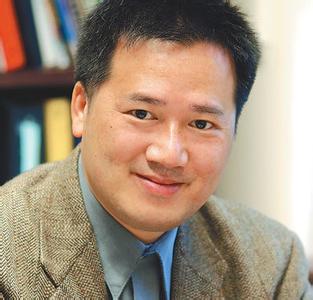
On August 10th, 2018, research led by Professor Xing Wang Deng from SUSTech and Dr. Dongqing Xu from UT-Austin was published in The Plant Cell, entitled “B-box protein 28 negatively regulates photomorphogenesis by repressing HY5 activity, and itself undergoes COP1-mediated degradation”. Visiting Scholar Dr. Fang Lin and Research Assistant Professor Dr. Yan Jiang from the Institute of Plant and Food Science, Department of Biology, are the co-first authors; Professor Jiansheng Liang and Miss Tingting Yan from SUSTech, Professor Liumin Fan and Dr. Jian Li from Peking University, Professor Z. Jeffrey Chen from UT-Austin are co-authors.
Sunlight is not only the major energy source for plants but also acts as one of the essential environmental factors affecting various physiological and developmental processes in plants. Plants have evolved a delicate molecular system to fine-tune their growth and development in response to dynamically changing light environments. In this study, we report that BBX28, an Arabidopsis B-box containing protein, negatively mediates the photomorphogenic development in a dose-dependent manner in plants. BBX28 interferes with HY5’s binding to promoters of its target genes through physical interaction, thereby repressing HY5 activity and negatively affecting the expression of the HY5-regulated gene. In the darkness, BBX28 associates with COP1 and undergoes COP1-mediated degradation via the 26S proteasome system. These results demonstrate that BBX28 acts as a key factor of the COP1-HY5 regulatory hub in maintaining proper HY5 biochemical activity to ensure normal photomorphogenic development in plants.
The study was supported by the Start-up Funding from SUSTech, National Natural Science Foundation of China, and Peking University-Tsinghua Life Science Joint Center.
Abstract:
CONSTITUTIVELY PHOTOMORPHOGENIC 1 (COP1) is a core inhibitor of plant photomorphogenesis. It is an E3 ubiquitin ligase containing a RING protein domain, which can directly ubiquitize downstream photomorphogenesis promoting factors such as HY5. It is degraded by the 26S proteasome to inhibit the photomorphogenesis of plants. BBX proteins are a class of transcriptional regulators containing the B-box protein domain. Multiple BBX proteins perform important functions in the process of photomorphogenesis mediated by the core regulatory components of COP1-HY5.
In the dark, BBX28 is ubiquitinated by COP1 and degraded by the 26S proteasome. Under illumination, HY5 and BBX28 are accumulated due to inhibition of various molecular mechanisms by COP1 activity. At this time, the accumulated BBX28 and HY5 form a heterodimer in the nucleus, inhibiting the binding ability of HY5 to the specific DNA motif on the downstream target gene promoter, thereby inhibiting the photomorphogenesis of the plant.
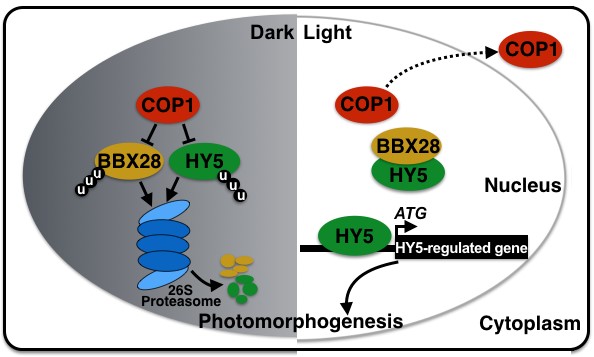
Molecular model of BBX28 inhibiting plant photomorphogenesis
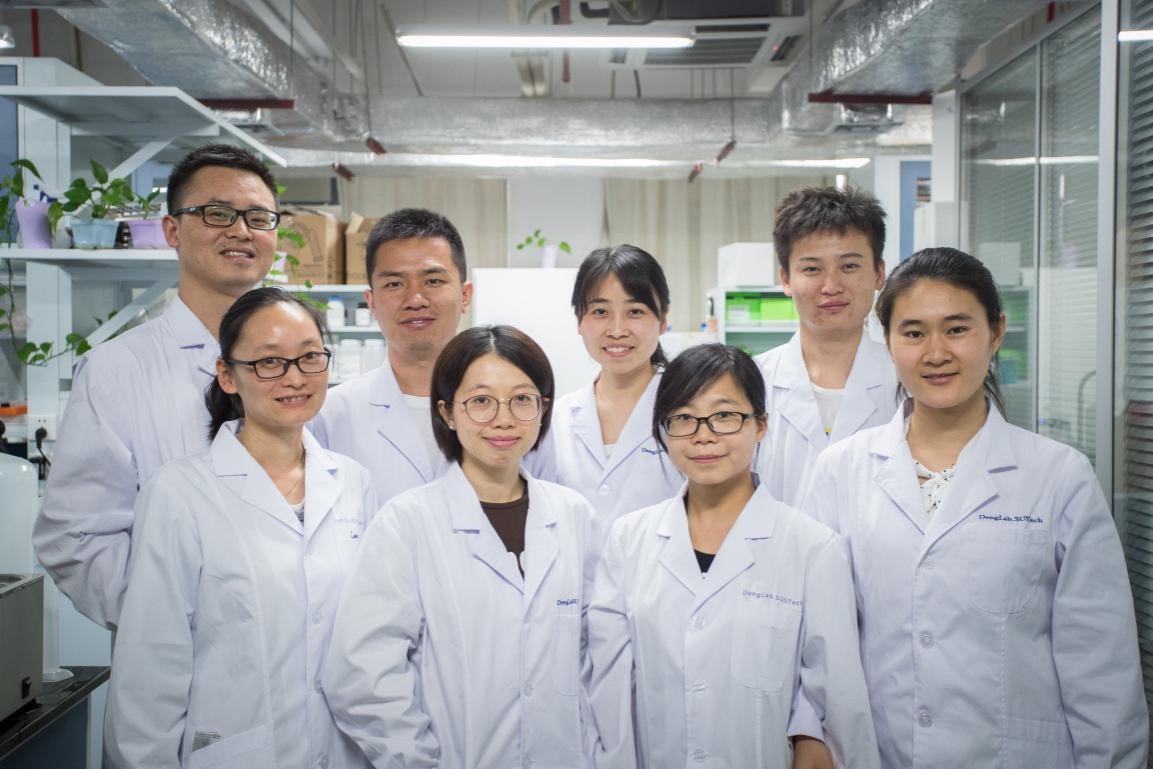
Professor Deng Xingwang’s Research Team
Talking to The Author:
In order to further understand this research results, the reporter interviewed Professor Deng Xingwang.
Q: What do you think is the necessary qualifications as a researcher?
A: As a scientific research worker, you not only need to work diligently and hard but also need to be good at thinking, analyzing, exploring earnestly and have good teamwork spirit. You cannot be lazy in your scientific research. Only one piece of literature is well-received, one experiment is slowly done, and a group of data is obtained in a down-to-earth manner so that it is possible to obtain truly rich and fruitful results.
Q: Why do you have such a strong interest in biology?
A: My interest in biology is first and foremost because of the desire to explore the truth. Secondly, I want to give back to society. I particularly want to do something for ordinary farmers and give back to their relatives. By improving their lives, they will be able to live a better life and this reflects the simple feeling of paying your respect to the community that raised you.
Q: What projects are the team going to do next?
A: Next, the research team will continue to search for new regulatory factors involved in the light signaling pathway. In addition, these important regulators involved in the light signaling pathway will conduct an in-depth analysis of rice and other crops and strive to apply what they have learned. In agricultural production.
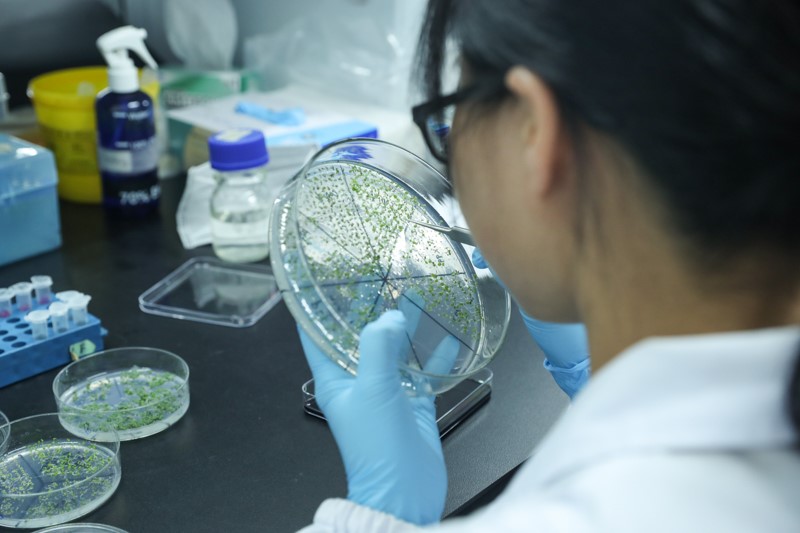
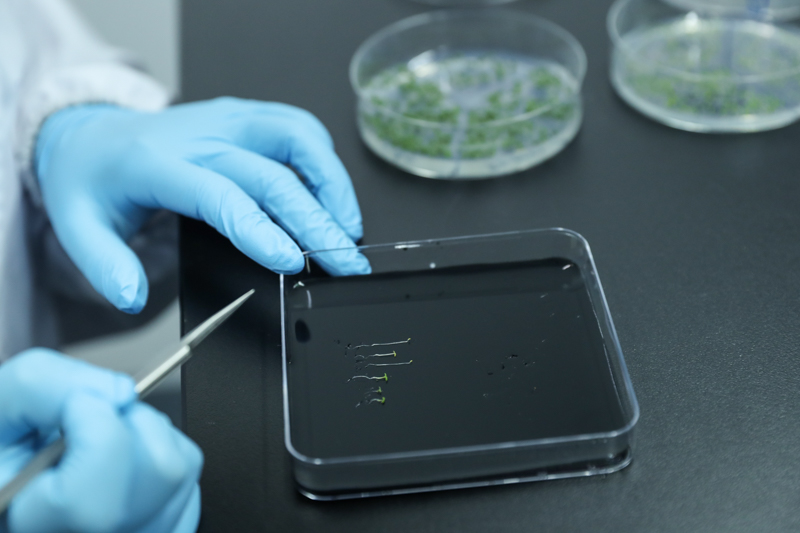
Experiment in process
Article link:
http://www.plantcell.org/content/early/2018/08/10/tpc.18.00226
Proofread ByXia Yingying
Photo ByDepartment of Biology